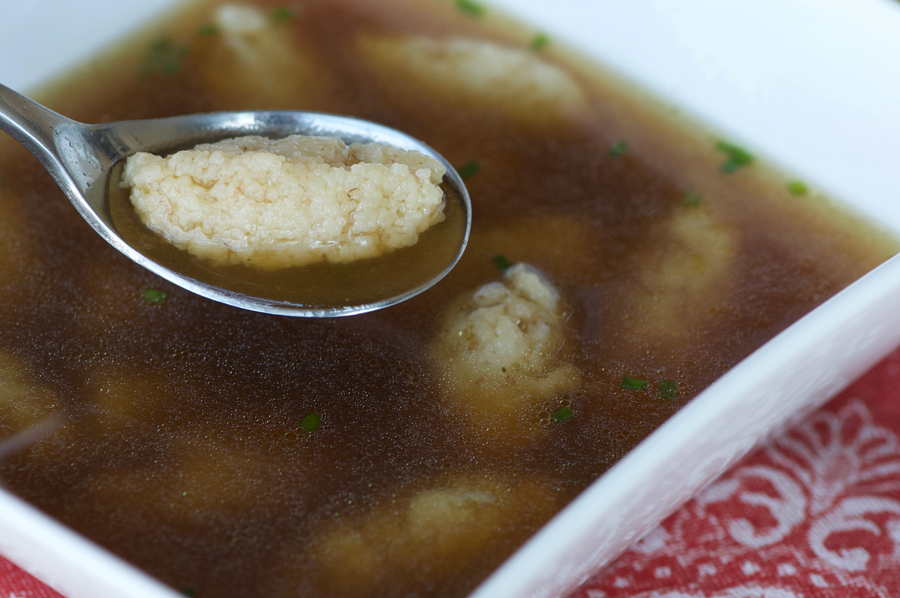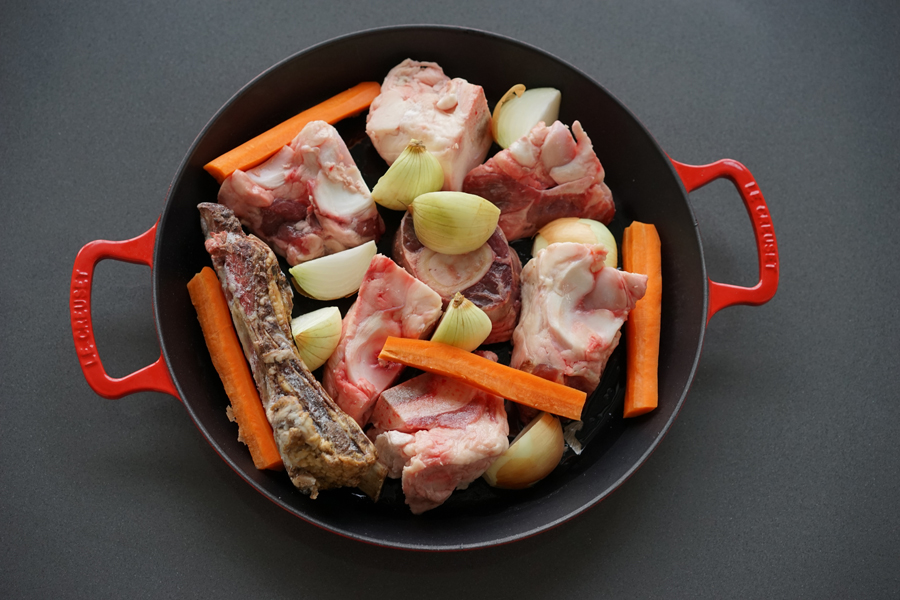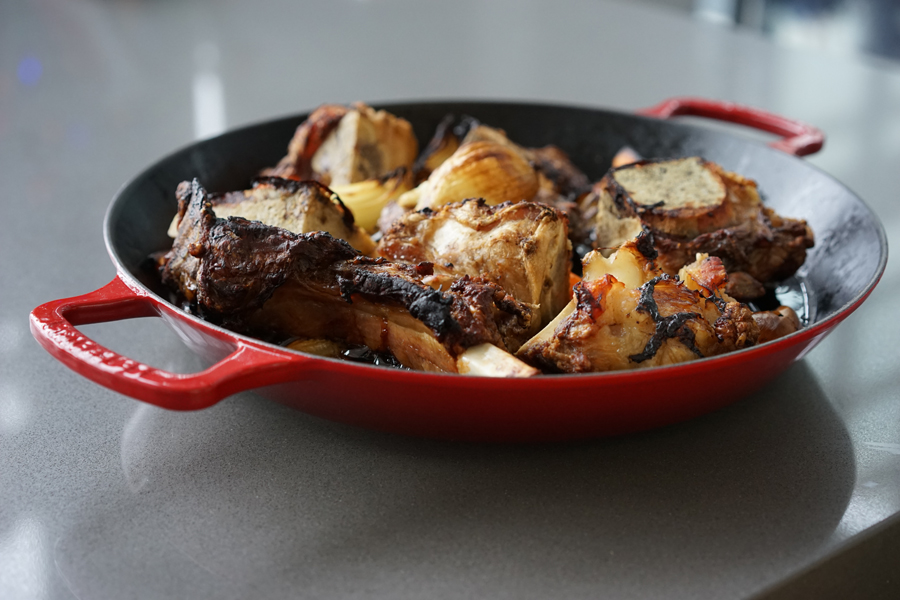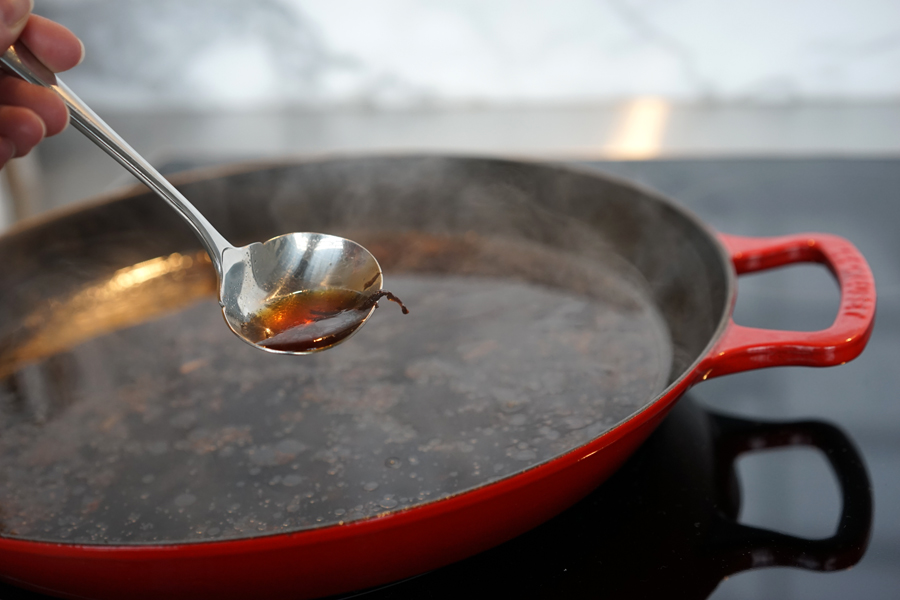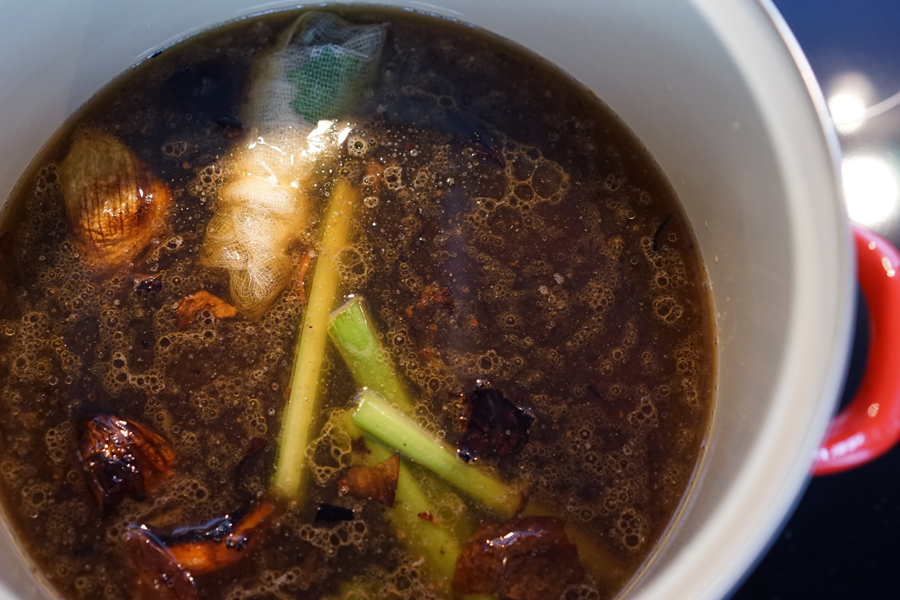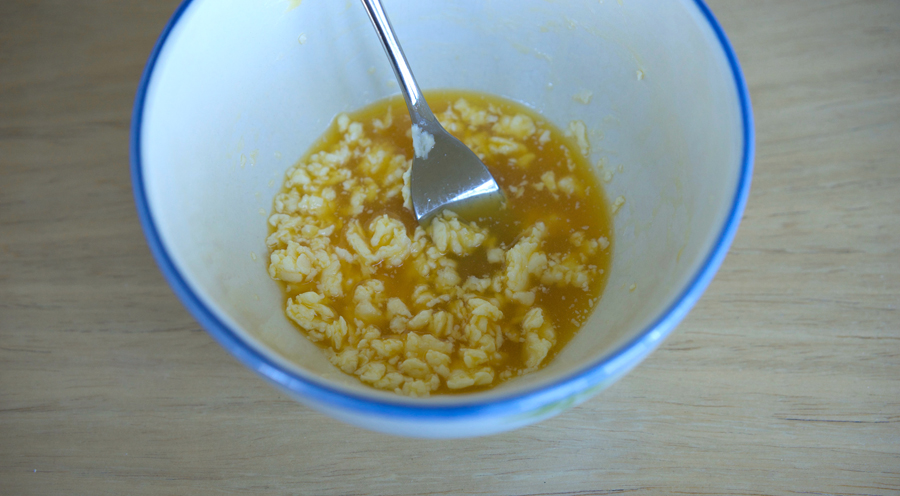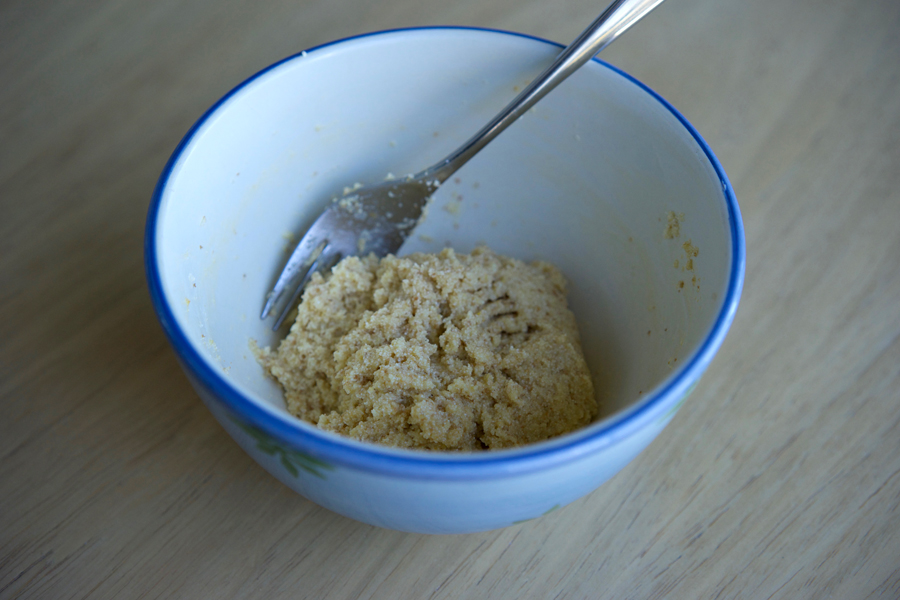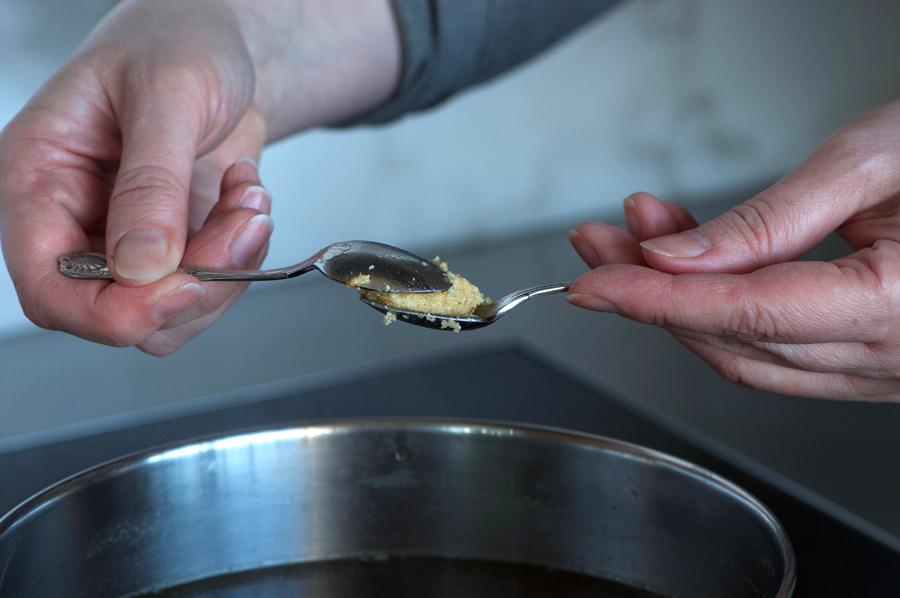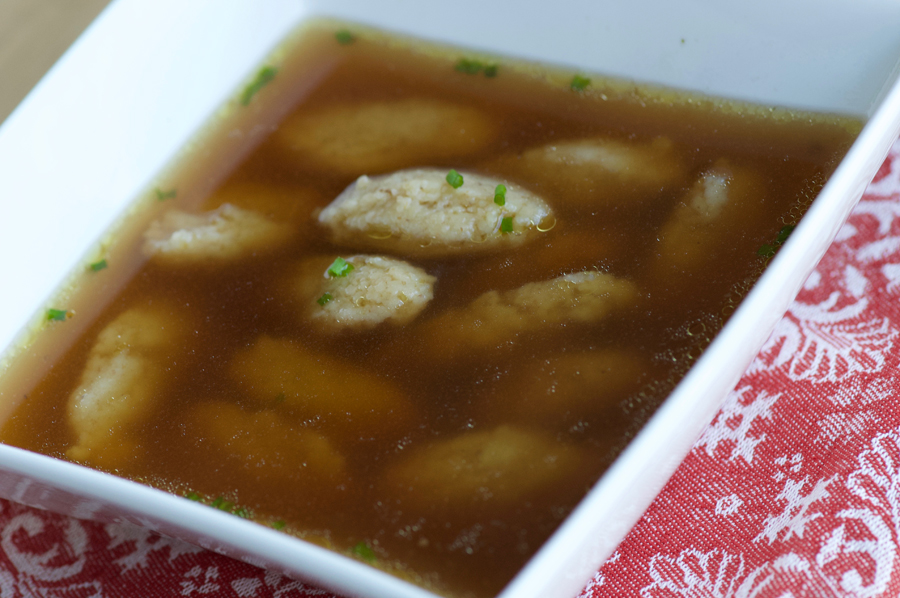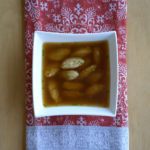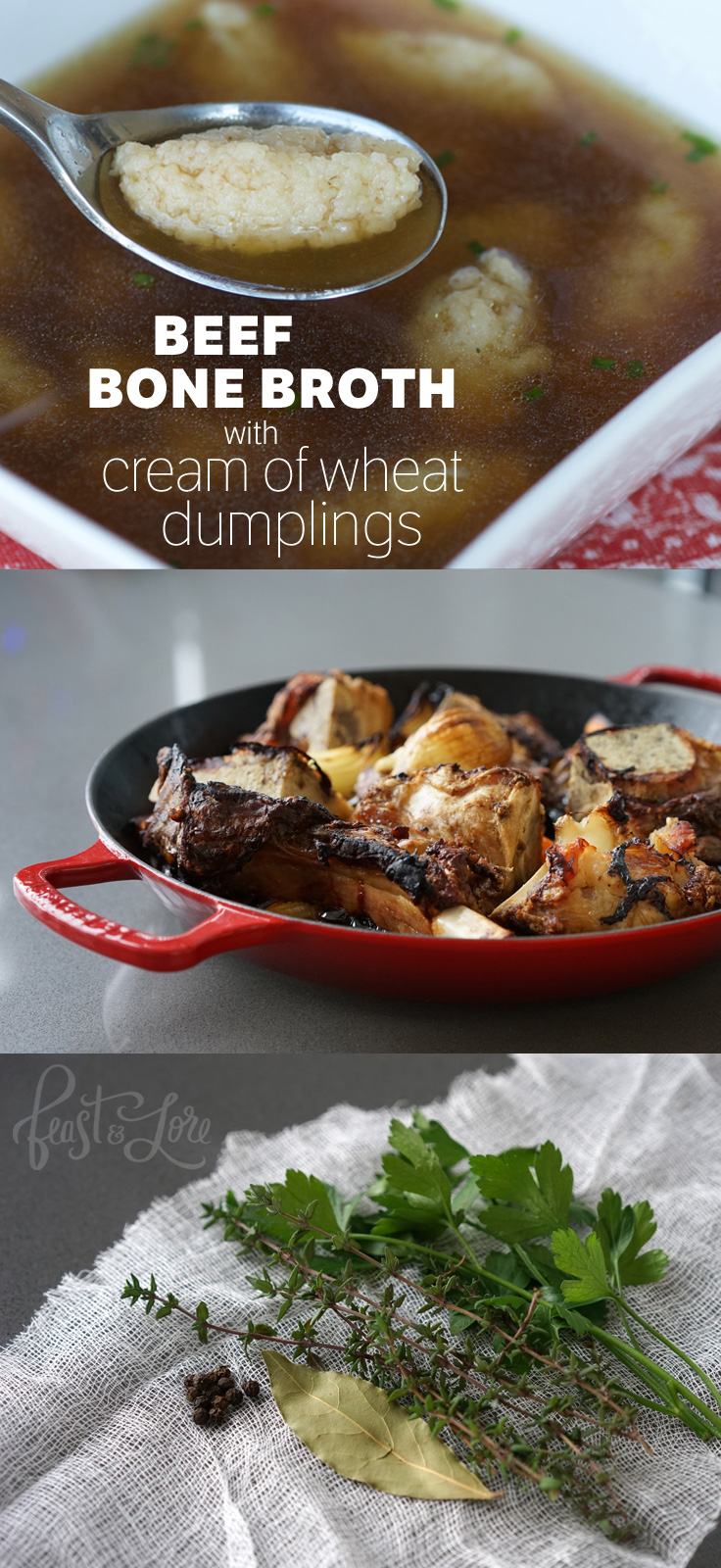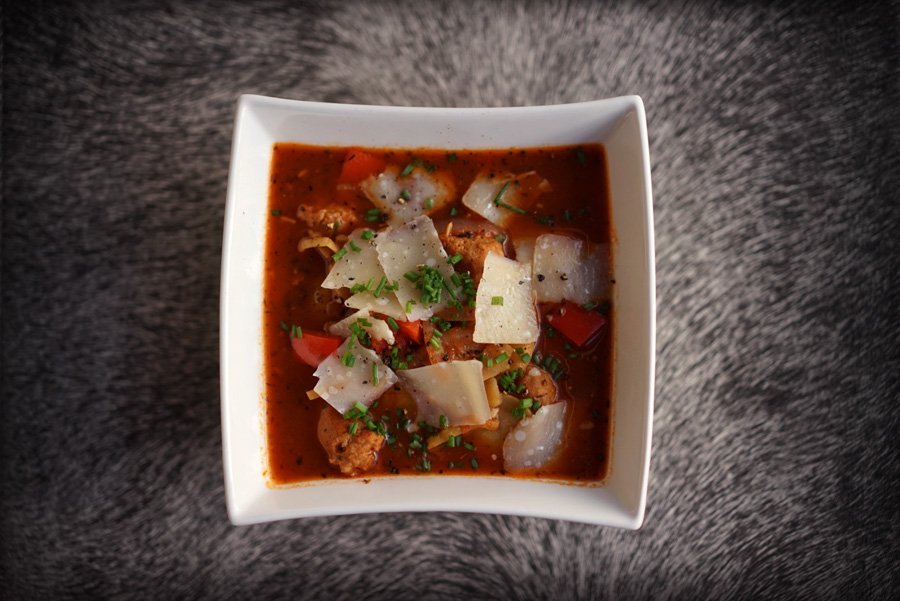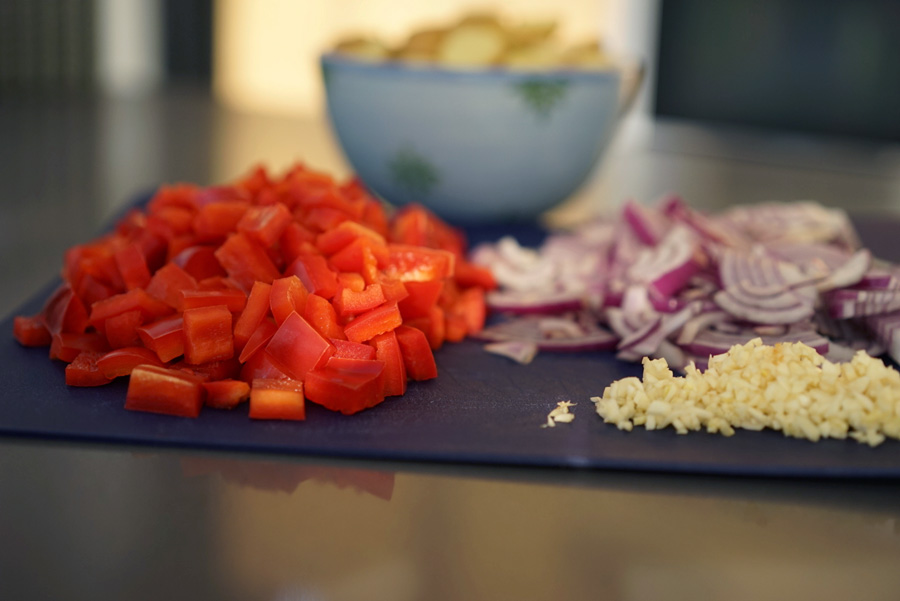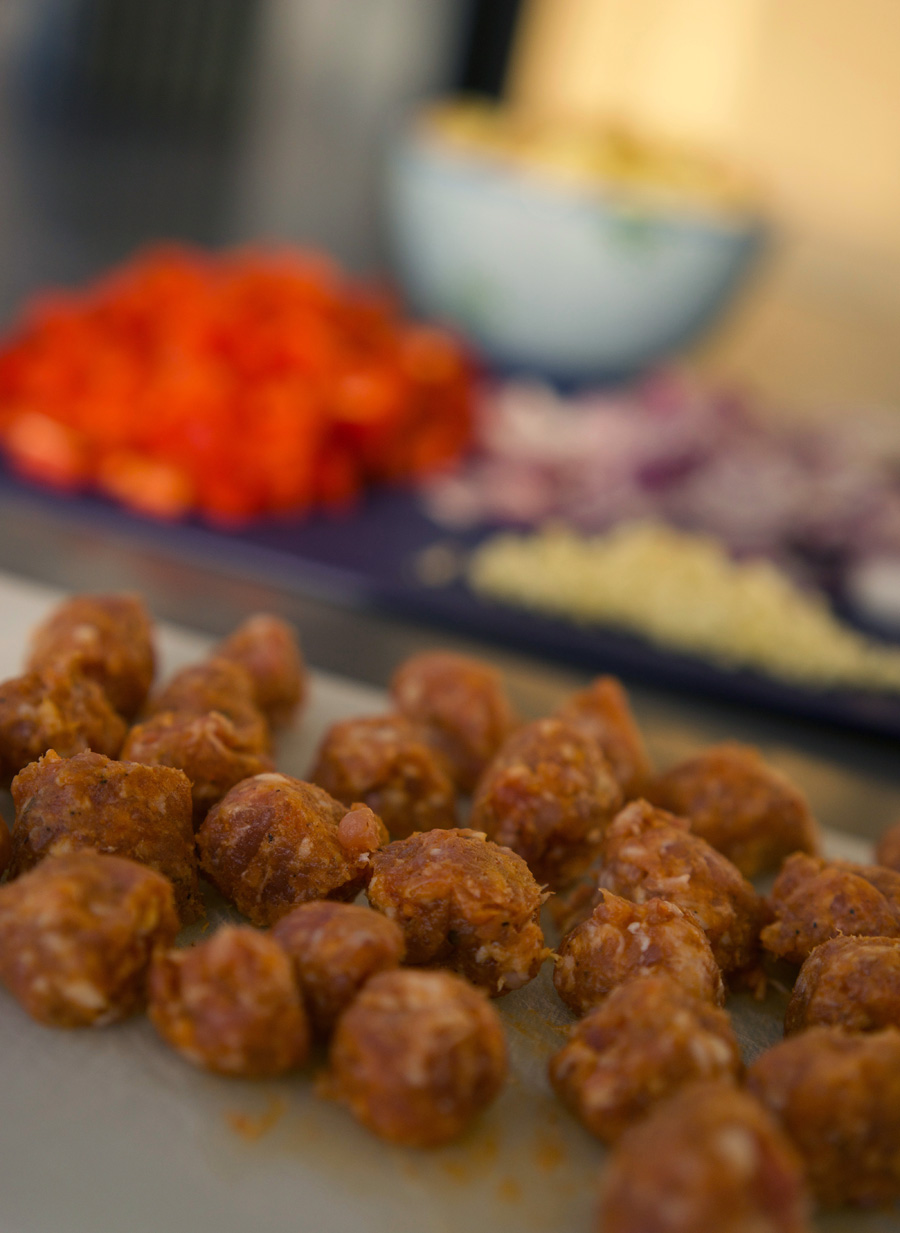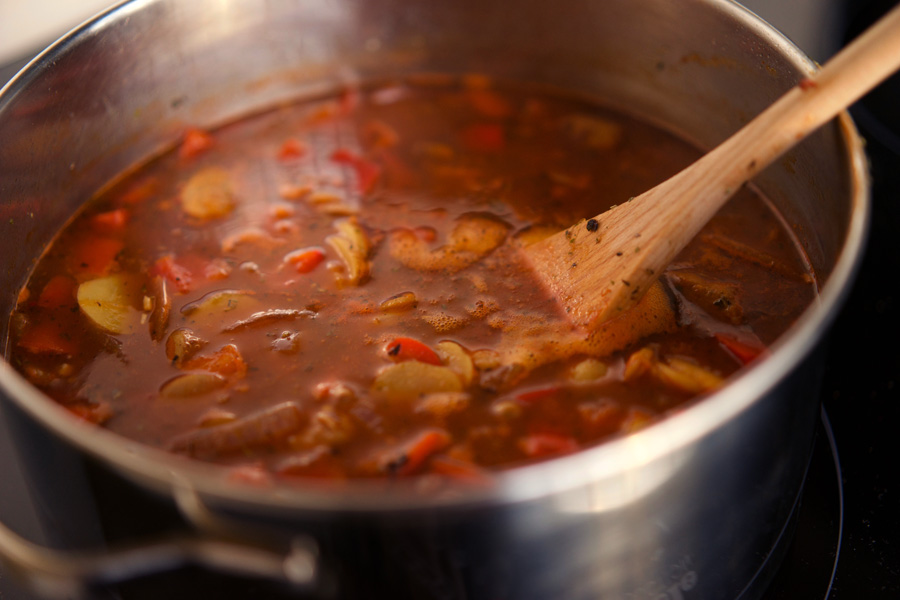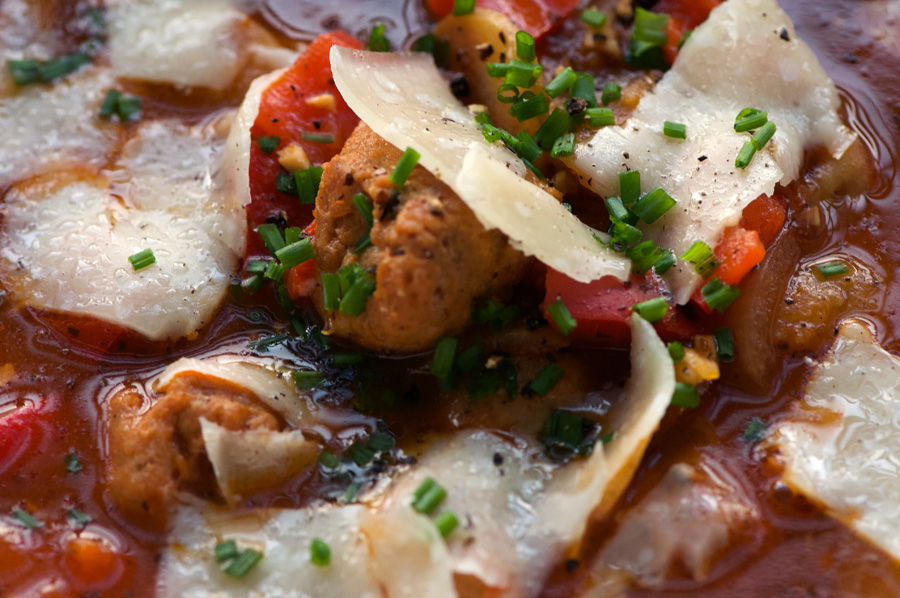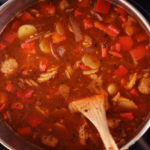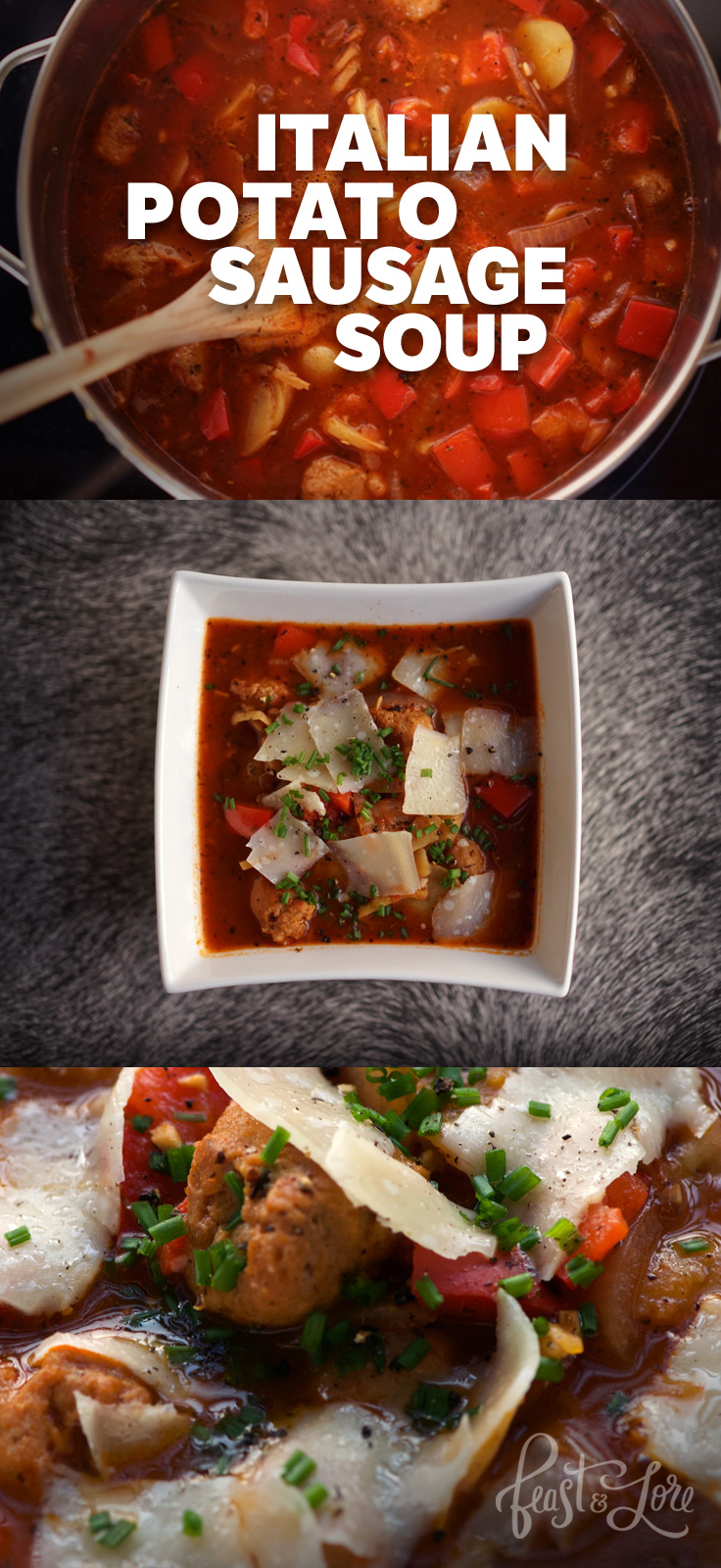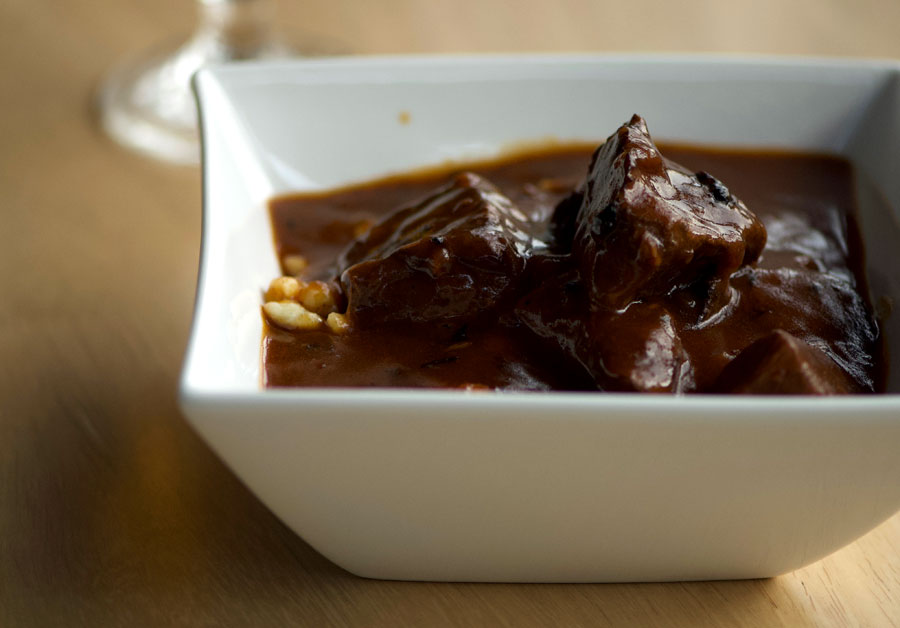
There is no hiding behind tomato paste, vegetables or other flavours. This is a purists’ goulash where all of the rich colour and flavour come from beautifully seared beef, caramelized onions, plus Paprika, and that’s it. This classic recipe is incredibly simple and requires only a few ingredients. I’ll get into the secret to mastering the very dark, rich gravy below.
First, we begin with onions. LOTS of them! Don’t be shy, it looks like a lot but they really cook down and lend a deep, caramelized flavour to the stew. It is important to cook them in animal fat for the best caramelization (like lard) over medium – medium high heat for some time (usually about 25 minutes or so) to ensure they get dark enough and caramelize to the point of almost looking black. Golden simply won’t due if you want a rich, dark gravy. Be patient and wait for them to look like the image below:
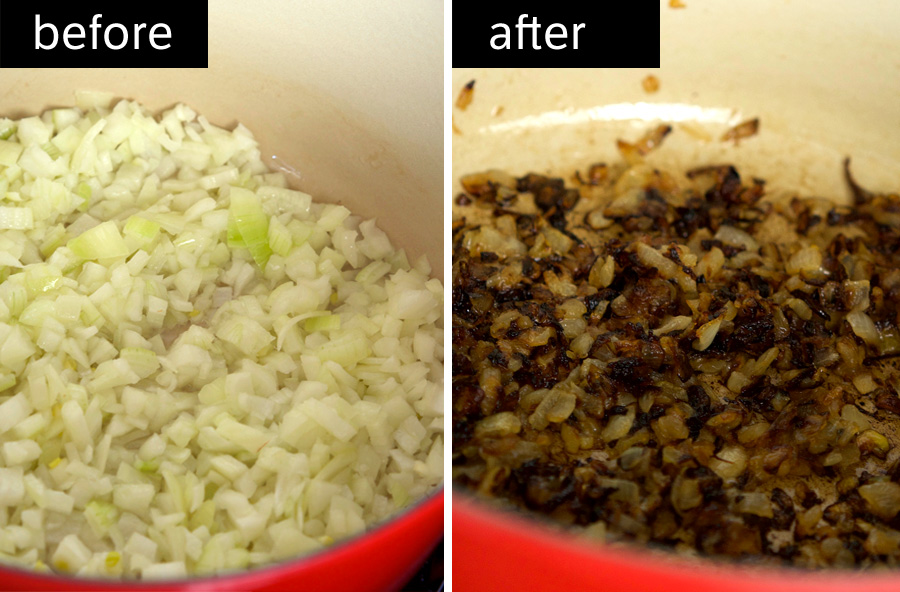
Once the onions are done, you’ll need to brown the meat. Remove the onions from the pan and set aside; add about a tablespoon of oil. Add the beef in batches, making sure not to overcrowd the pot. Drop the meat in and don’t touch it for about 3–4 minutes. This will help get you the very deep, dark areas of searing as shown in the image below. If you start to flip the meat and it’s not brown yet, continue to leave it until it is. If too much water evaporates from the meat and you find it’s steaming instead of browning, turn up the heat until the water cooks off. Then the meat will be able to brown. Pressing your meat with a paper towel before browning can help if you find it is holding too much moisture. If the pan starts to look dry, add a bit more oil.
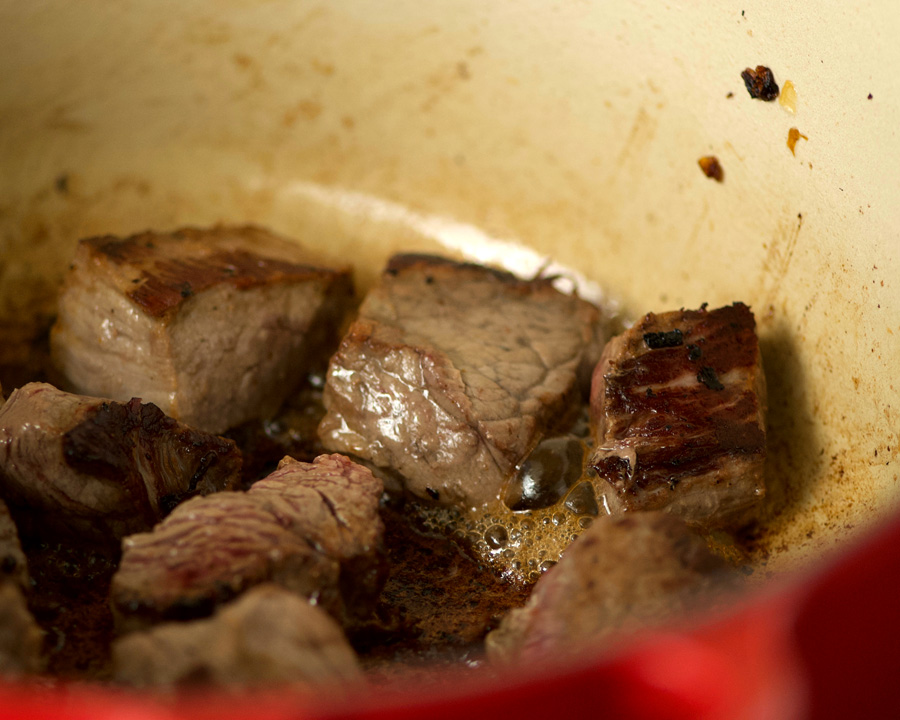
Once the meat is nicely browned, it’s time to add the spices. I use the Paprika shown below (LOTS!) About two tablespoons sweet (or more), and one tablespoon hot).
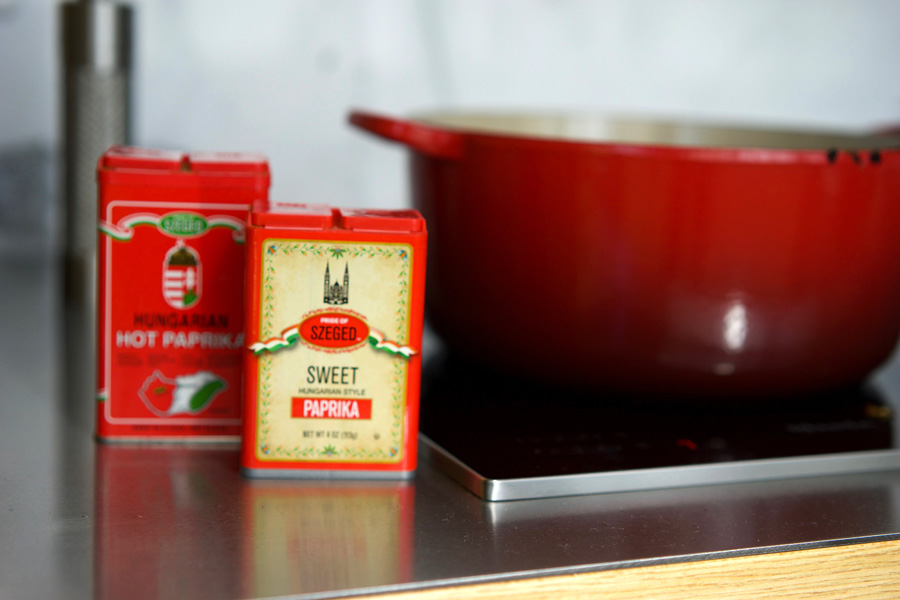
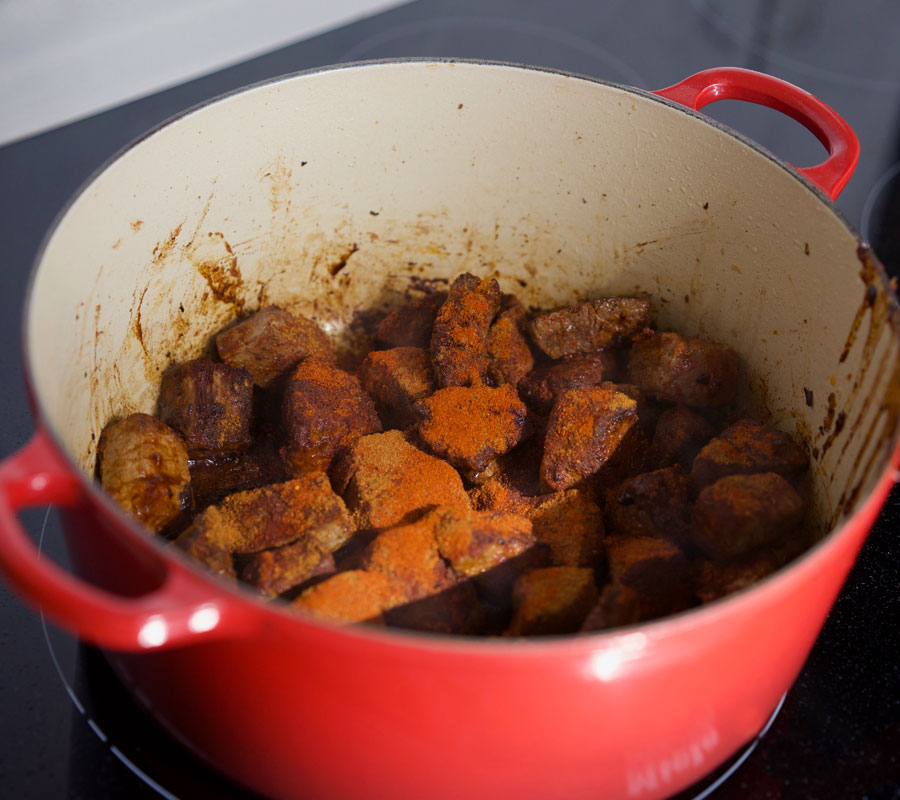
You want to add the Paprika to the pot and stir it around with the meat to heat it up in the oil to bring out all of the smokey spice’s flavour.
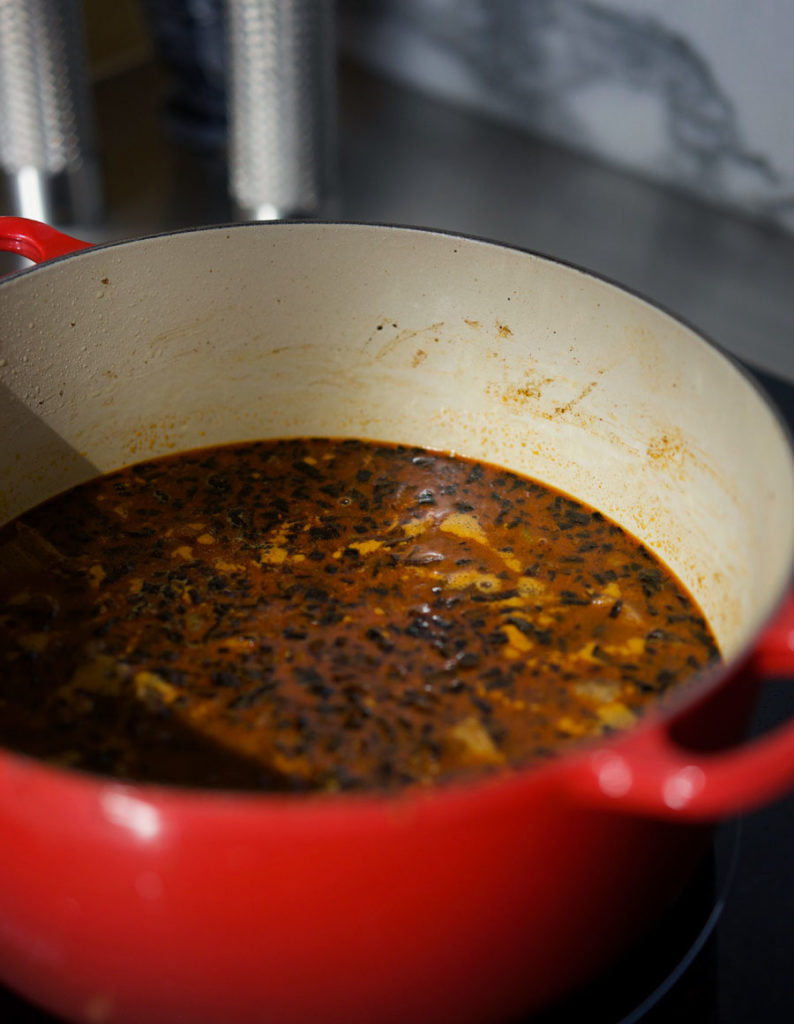
Then place the reserved onions back in the pot and add water and salt, scraping up the browned bits from the bottom of the pot. Simmer, covered, over medium-low heat for about two hours. You can pretty much ignore it, just checking occasionally to make sure it’s neither bubbling too profusely nor standing still with no bubbling at all. You want just a very slow, gentle bubble here and there to gently and slowly cook the meat to keep it tender.
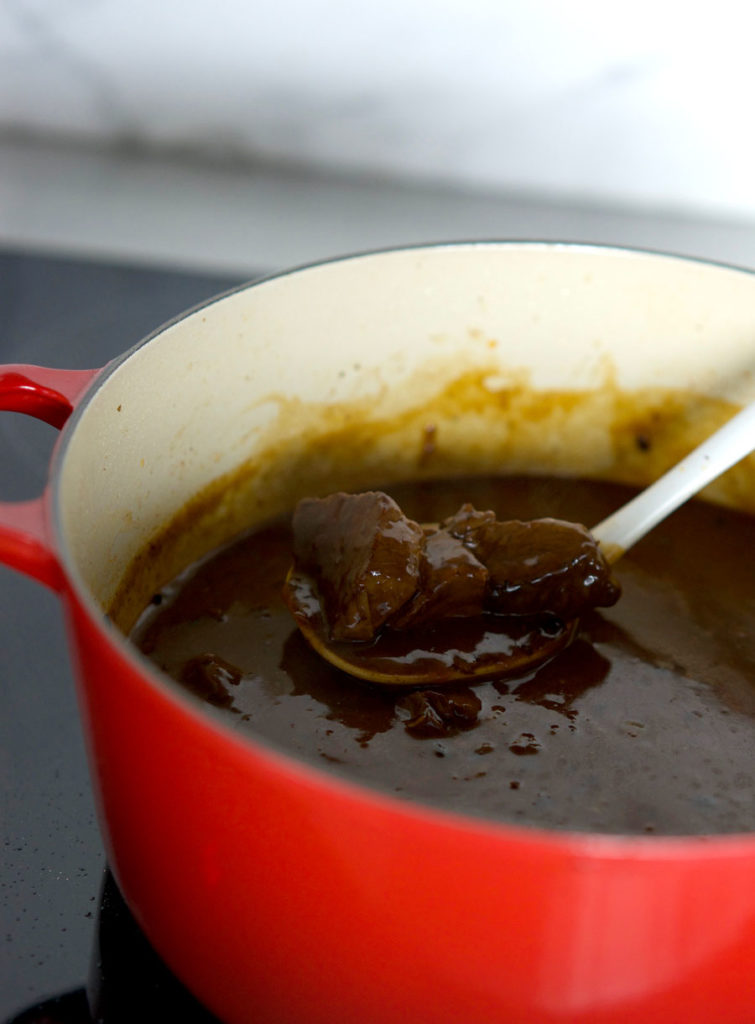
Once the meat is tender, add more water and bring to a simmer. Add a mixture of cornstarch and flour dissolved in cold water to thicken the sauce, simmer for a few more minutes, and it’s ready! Serve over spaetzle style noodles, potato dumplings, or potatoes.
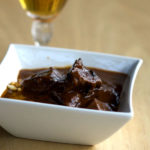
Beef Goulash
A hearty, dark beef stew with onions and Paprika. No tomato paste, carrots or other stuff—this is a purists’ beef goulash that needs nothing extra added. Serve over noodles, dumplings or potatoes. Trying to resist a second helping is futile.
Ingredients
- 1/4 cup lard Tenderflake works well
- 4-6 onions, roughly chopped
- 1 tbsp vegetable oil
- 2.5 lbs stewing beef
- 2 tbsp Sweet Hungarian Paprika or more if desired
- 1 tbsp Hot Hungarian Paprika substitute 1/2 tsp cayenne if you can’t find hot Paprika
- 1 tsp salt
- 4 1/2 cups water, divided 3 ways possibly more
- 1/4 cup flour
- 1/4 cup cornstarch
- spaetzle noodles, dumplings or potatoes for serving
Instructions
-
In a large pot, heat lard on medium-high heat. Add onions. Cook, stirring until they just start to brown, and turn down the heat slightly to avoid burning. Continue cooking until very dark and caramelized—they should be almost but not quite black. Once they reach the right colour, remove the onions to a side plate and reserve.
-
Add 1 tbsp oil, turn up the heat to medium-high, and then add some of the beef, ensuring the pot isn’t overcrowded. Don’t touch the beef for about 3 minutes; check to see if dark brown areas have developed. If so, flip the meat until browned on all sides. If not, continue to heat until the right colour is there. Turn up heat if the meat isn’t browning enough. Brown the beef in batches, usually two batches does the trick in my pot. Once all of the meat is browned, add both Paprikas and stir over the sizzling heat for about one minute to bring out the flavour of the spices.
-
Add the onions back into the pot along with the salt and two cups of water (or enough to just cover the meat). Scrape up any bits from the bottom of the pot. Simmer on low for about 1.5 – 2 hours, until meat is tender.
-
Combine flour and cornstarch with 1/2 cup cold water; stir well to dissolve, pressing out any lumps. Add to the pot with an additional two cups water. Bring to a boil and simmer for about five minutes until sauce is bubbling and thickened.
-
Serve over spaetzle style noodles, dumplings or potatoes.

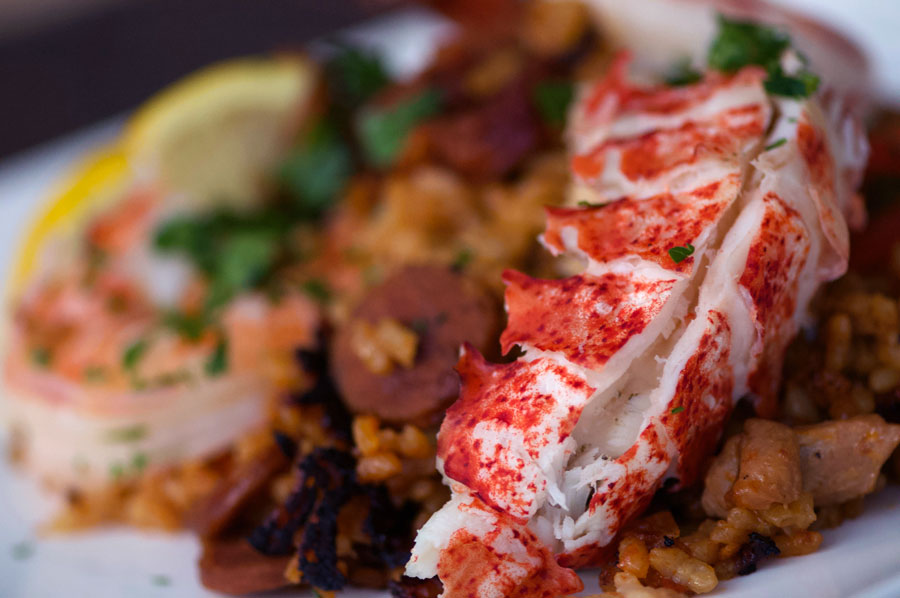
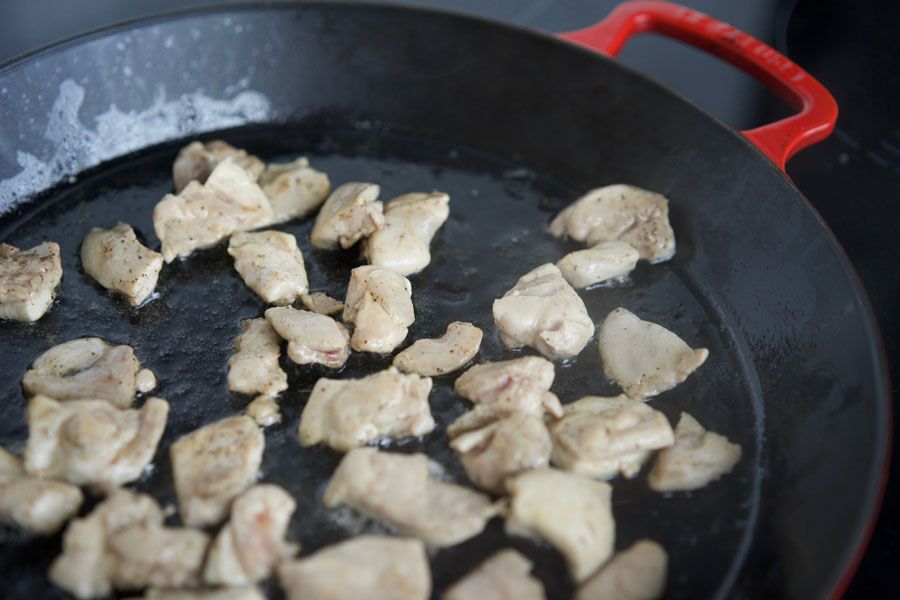

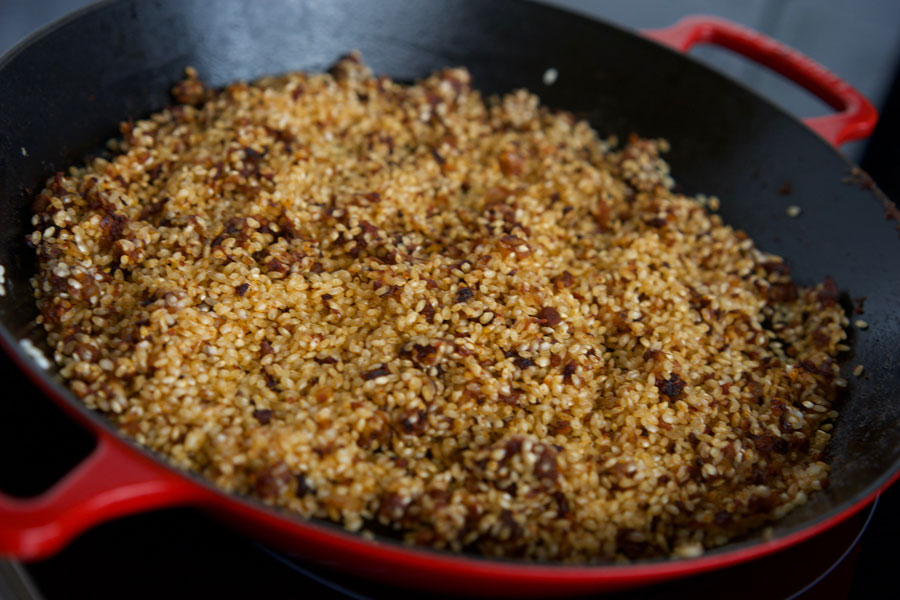
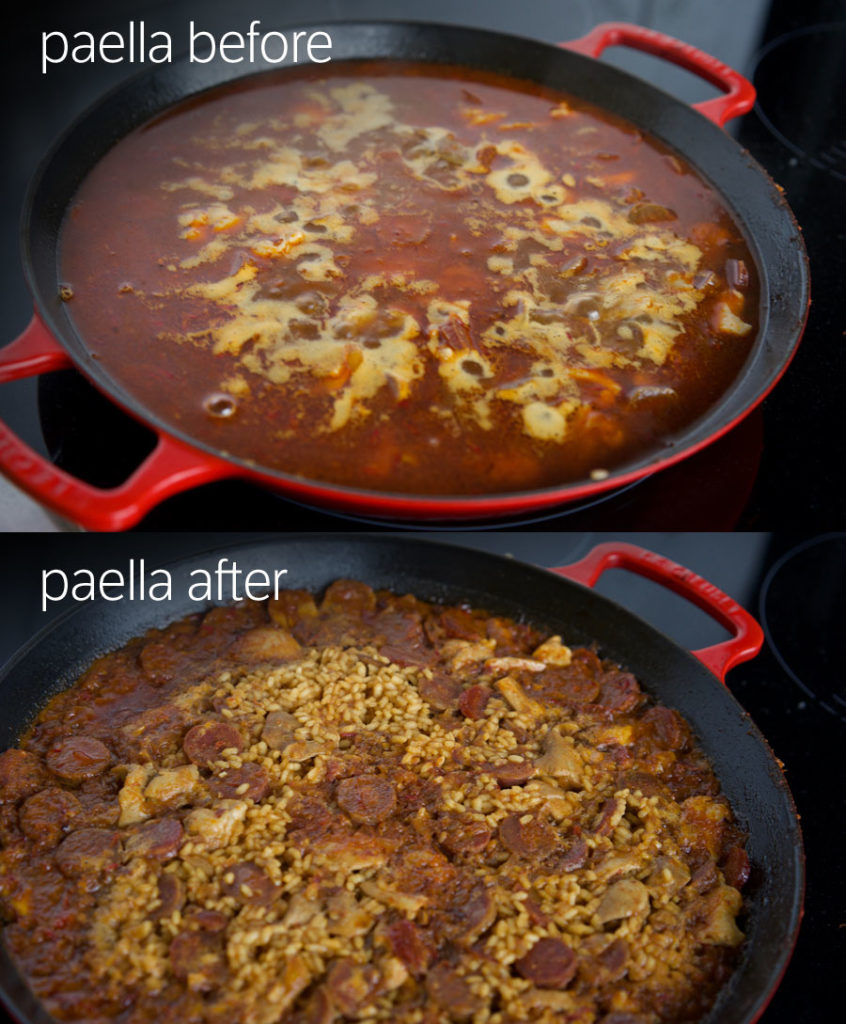
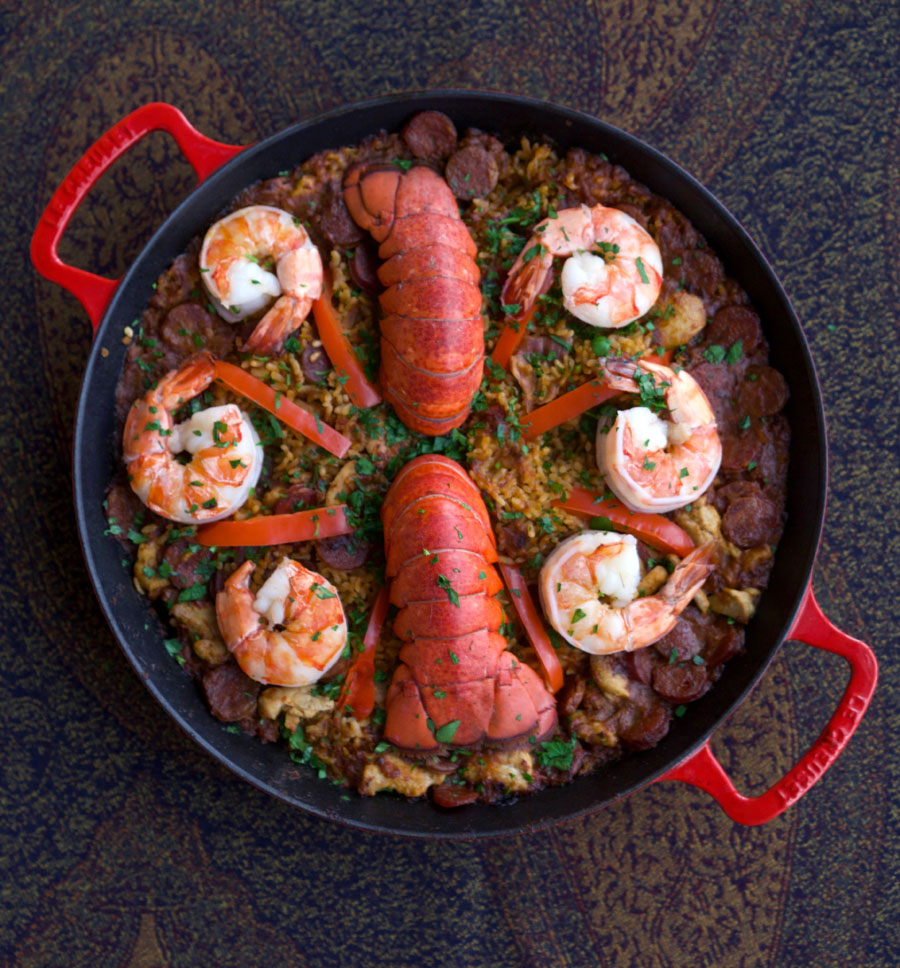


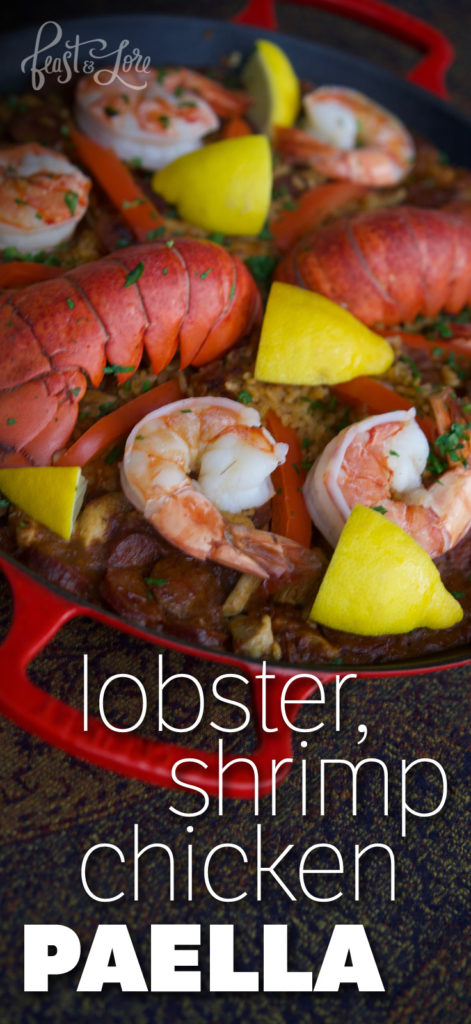



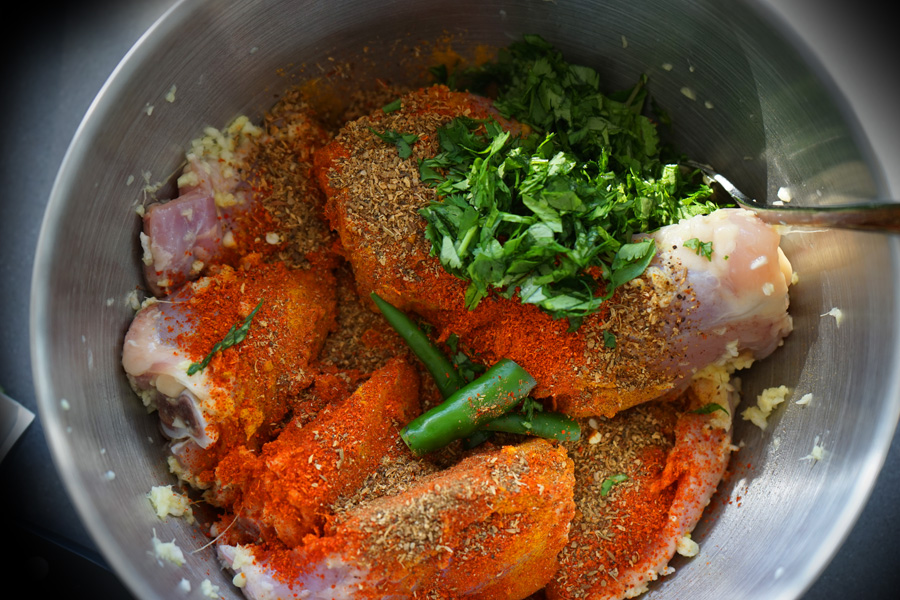
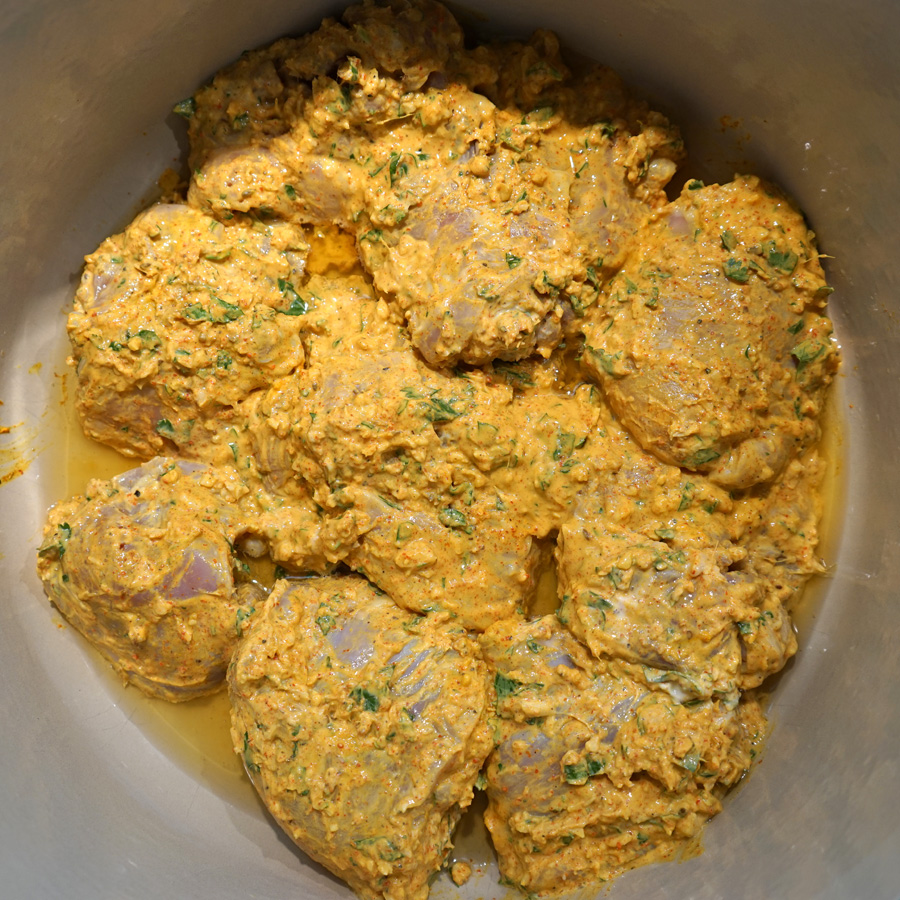
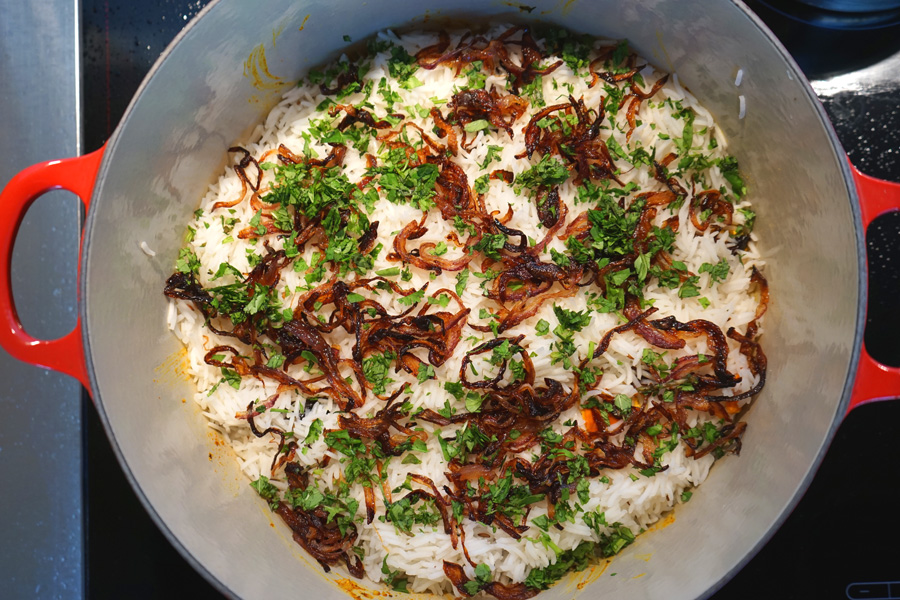
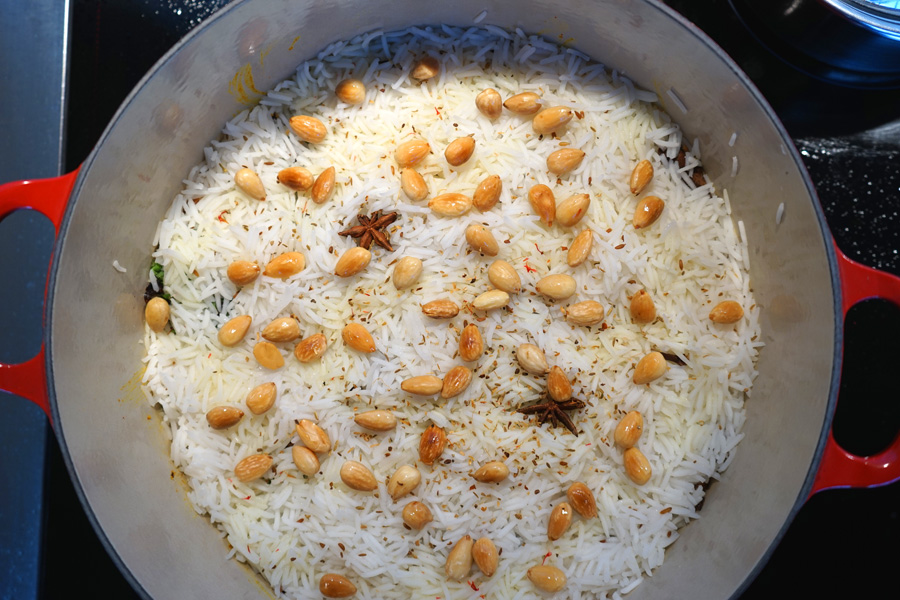
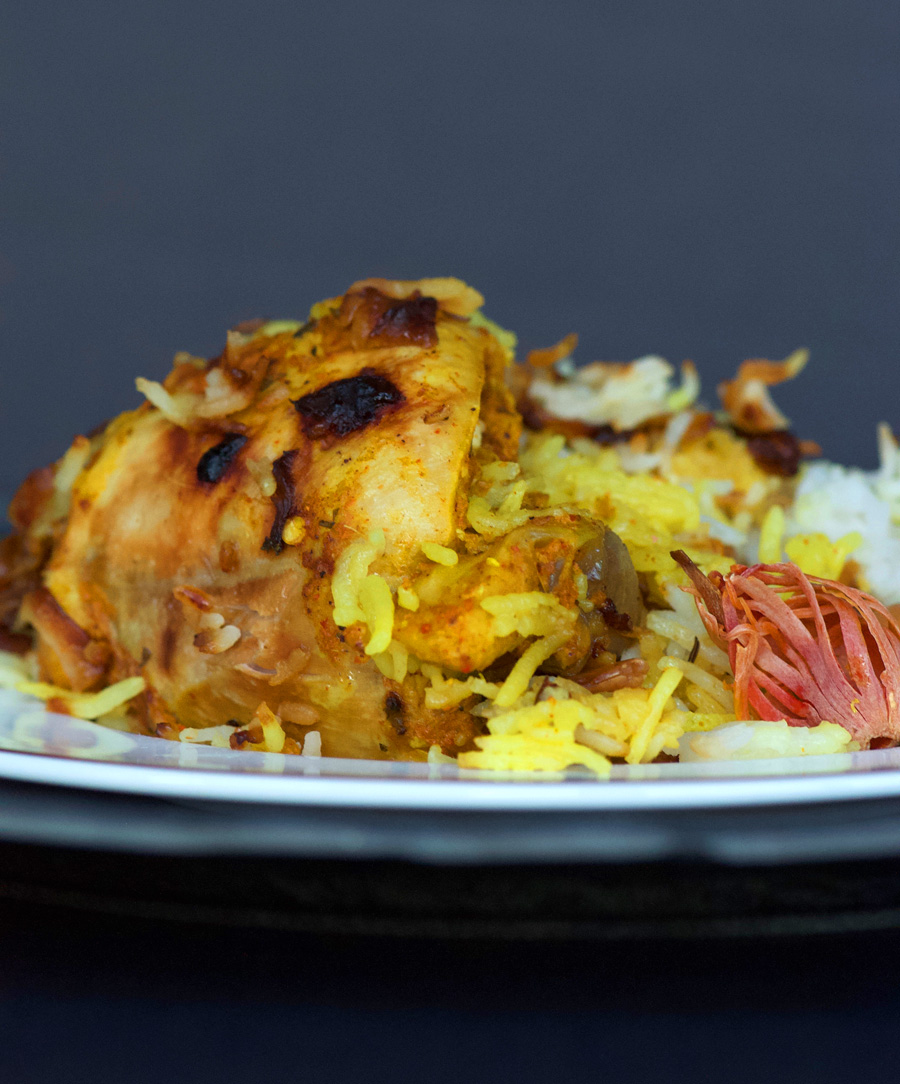
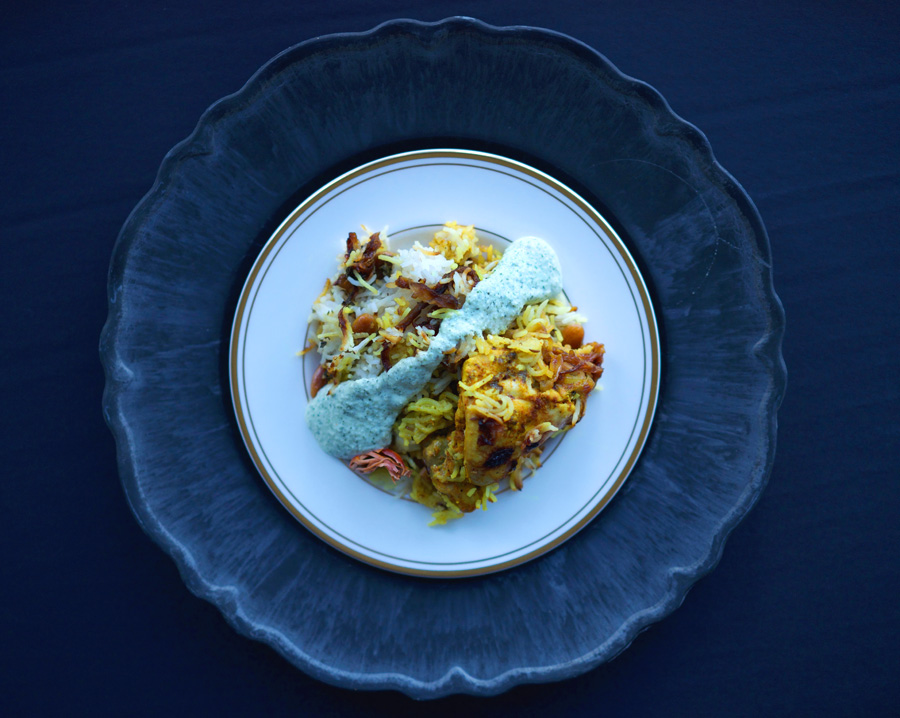

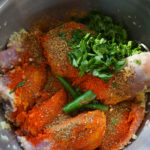
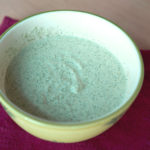
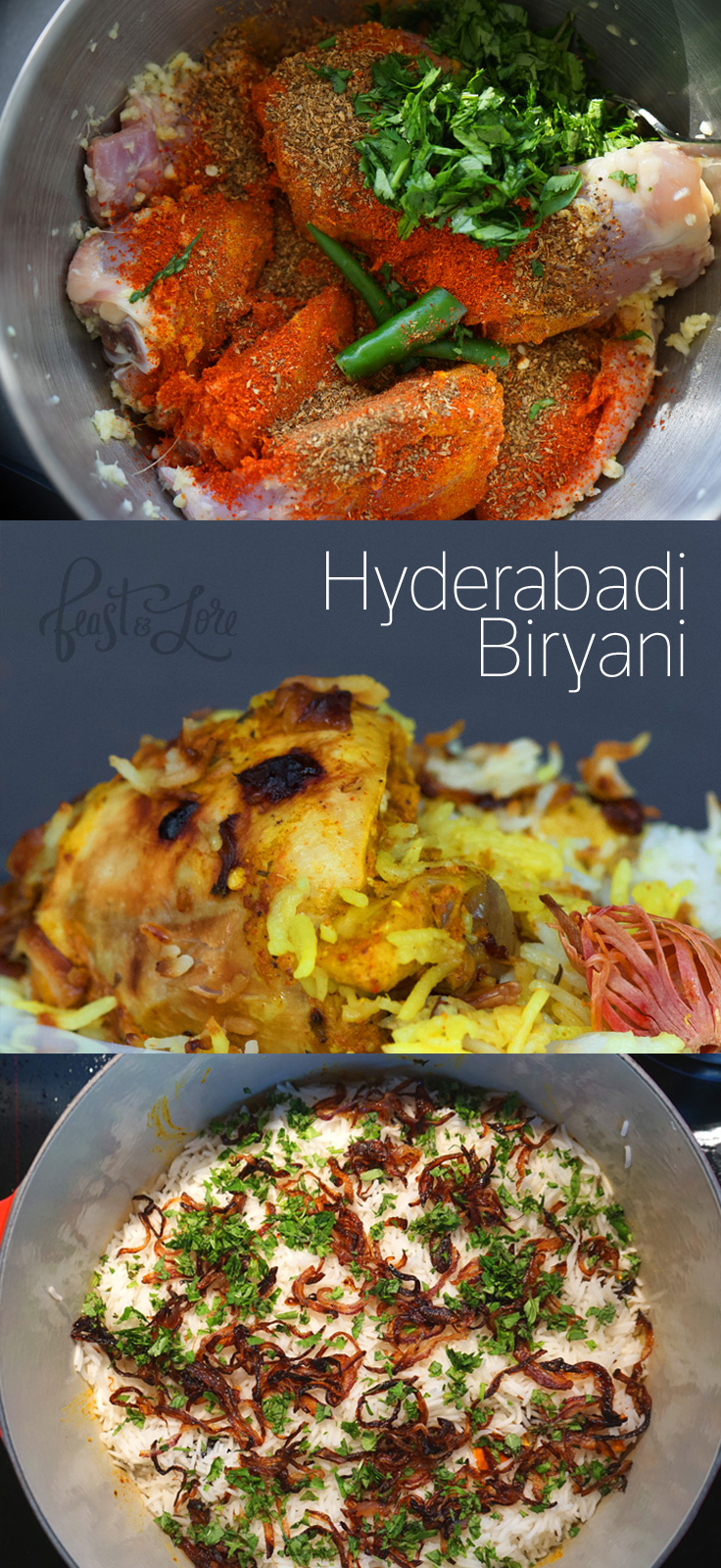 />
/>